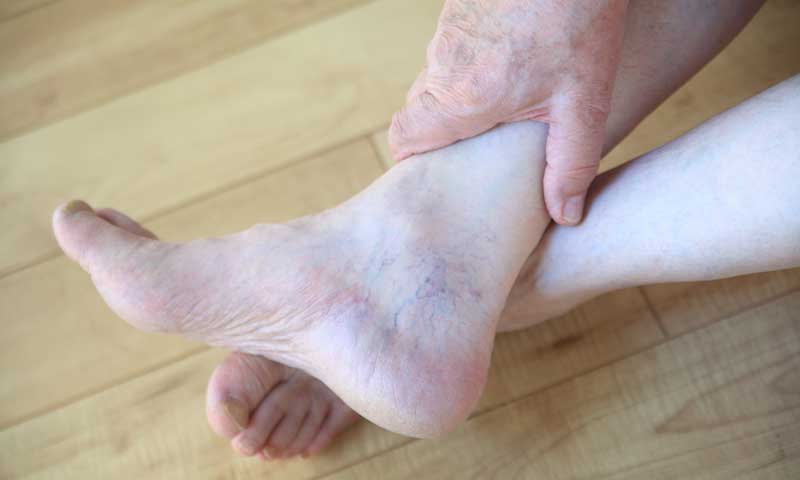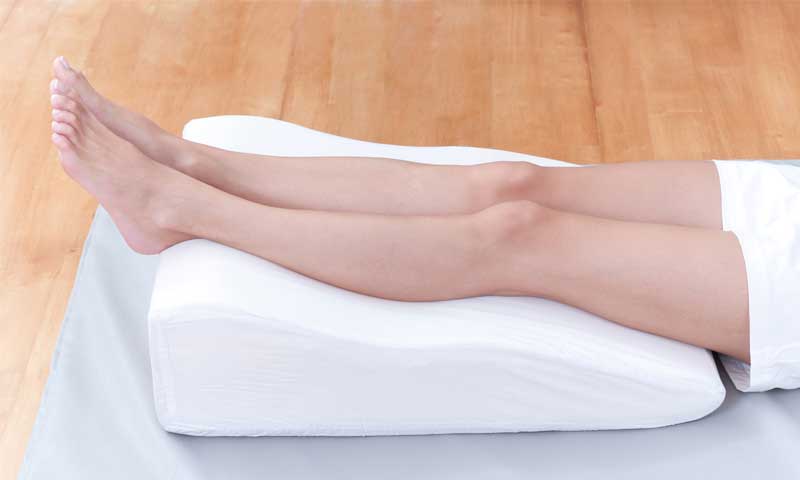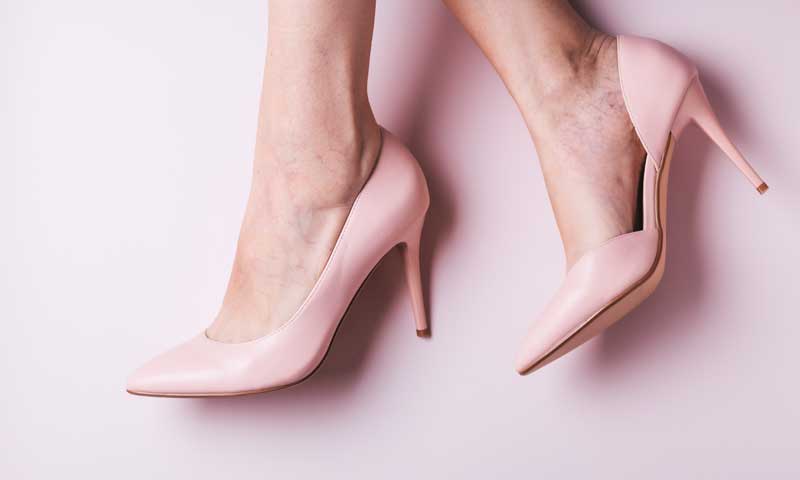Do you have clusters of red, blue, or purple veins on your ankles or feet? Are these veins thin and close to the surface of the skin? If so, it sounds like you have spider veins. Many people come to our vein center asking about the spider veins on their ankles and how to treat them.
What Are Spider Veins?
Spider veins develop when blood gathers in the veins that exist near your skin’s surface. These veins have stopped working efficiently because they are weak or damaged. Blood backs up and pools, causing the veins to become visible.
Why Are Spider Veins Commonly Found on Ankles and Feet?
Ankles and feet are prone to developing spider veins. Slower blood circulation and increased pressure on veins causes feet to swell. This encourages the formation of spider veins.
You also find spider veins on the thighs, calves, and face.

What Factors Influence the Development of Spider Veins?
Heredity plays a major role in the development of spider veins. In fact, studies show that up to 90 percent of people who have spider veins have a family history of them.
Other factors can include:
• Sitting or standing for long periods of time
• Obesity
• Trauma
• Sunlight exposure
• Pregnancy

What Do Spider Veins on Ankles Look Like?
Spider veins have a specific look. They seem to gather and branch out from a central location. Each vein is usually less than 1mm in diameter.
This common grouping of veins often resembles a branch, a spider, or a spiderweb. Now you know where the name “spider veins” comes from!
When blue and/or red spider veins are on the inside of the ankle or foot and form a crown-like pattern, it is called corona phlebectasia. This is associated with advanced vein problems. People with corona phlebectasia should visit a vein doctor for a complete diagnosis and treatment plan.
Symptoms of Spider Veins
Spider veins on the ankles, although unsightly, usually don’t indicate a serious health problem.
Sometimes they are itchy or painful. But most often, spider veins are mainly annoying from a cosmetic standpoint. Understandably, people want unattractive spider veins treated.
In rare cases, spider veins contribute to the formation of large skin sores, or ulcers. This problem is most likely to occur near spider veins on the ankles and requires immediate treatment.
Treatment for Spider Veins on Ankles
Excellent treatment exists for unattractive spider veins on feet and ankles.
You can try some simple things at home to ease minor discomfort and prevent additional spider veins from forming.
Unfortunately, untreated spider veins will worsen over time.
To eliminate existing spider veins, visit our office for safe and effective treatment.

Ways to Prevent Spider Veins on Your Ankles
When sitting, keep your feet elevated above your heart. This will improve your circulation and can even reduce the size of spider veins in your ankles and feet. Use a recliner or put pillows under your feet in bed.
Wear compression socks. Compression socks will improve your blood circulation and reduce pressure on leg and foot veins. Your feet will not swell, reducing the development of more spider veins.
Try not to stand for a long period of time. And try to stand on your tiptoes at workable intervals. This will improve leg muscles and blood circulation in spider veins.
Exercise more. Increase your physical activity to reduce vein discomfort. Regular-paced walking will improve your spider vein health.
Learn useful massages for your ankles and feet. Our doctor can discuss what type of massage will work best in your situation.
Visit Our Office for a Spider Vein Evaluation
Patients come to our office for accurate diagnosis and state-of-the-art treatment of spider veins and other vein issues.
At NJVVC, we know the importance of thoroughly understanding your vein health. We perform comprehensive vein evaluations so we can successfully treat your spider vein problems.
Sclerotherapy Treatment for Spider Veins
Before our doctor treats your spider veins, he will make sure they aren’t associated with varicose veins. If our doctor finds this connection, he will first treat your varicose veins; this will keep the spider veins from reappearing after treatment.
Spider veins in themselves may not be a serious problem, but varicose veins often need treatment.
Visual Sclerotherapy is extremely effective in the treatment of spider veins. It involves injection of a solution into the spider vein. The solution causes the vein to collapse.
This treatment requires no anesthesia.
The sclerosing agent that we use at NJVVC is safe and comfortable for the patient. Your treated spider veins will collapse and disappear three to six weeks after your procedure.
If you have spider veins or other vein issues, contact us for an appointment. We offer expert diagnosis and treatment.


